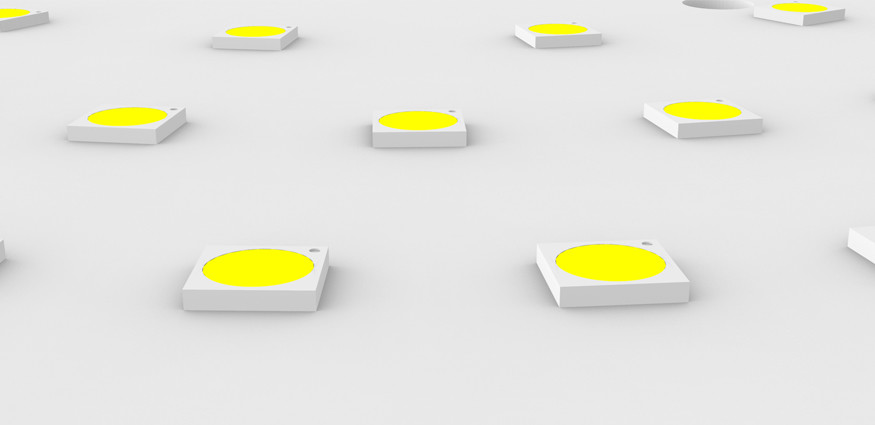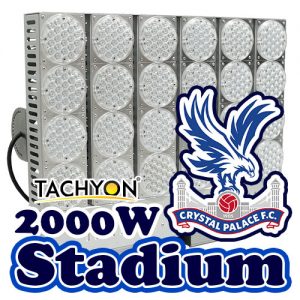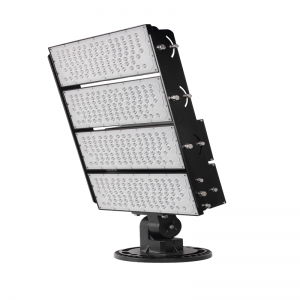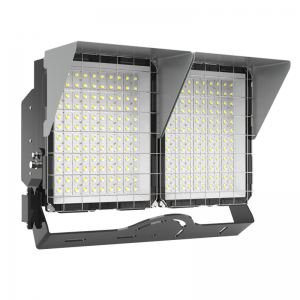Statement from IEC and ENERGY STAR:
The IEC organization proposes to use the maintenance rate to describe the failure rate, life, life expectancy, etc.
EPA (United States Environmental Protection Agency) announced: Energy Star Lamp V1.0 technical specification is “technically neutral”, which stipulates that the life of matching lamps is 10,000 hours, that is, the rated lumen maintenance rate life, and integrated LED lamps require 15,000 to 25,000 hours. .
The Energy Star standard proposes to measure the luminous flux maintenance rate of the LED light source (lamp) after the rated current is applied for 6,000 hours. And to calculate the working life of the product (referring to the effective working time), it is also required that the color space uniformity in the whole life period is within 0.006 in the CIE1976u’v’ diagram. This approach is generally accepted in the industry. But the specific operation is difficult, because it takes more than 250 days of trial time, which is difficult to implement in the enterprise.
3. Improve reliability
Improving LED reliability is a common goal within the industry. Various factors affecting the reliability of LED products, such as chip manufacturing, packaging, thermal resistance, heat dissipation, etc., have been described in detail before. Here, I hope that the company will make the following two requirements on the basis of comprehensive quality control of LED products:
(1) Reduce the failure rate
At present, in practical applications, product failures often occur, and some are even serious. It is hoped that relevant units can find out the cause of failure through various tests, and take effective process screening methods to eliminate early failure and accidental failure of bad products, and reduce the failure rate as much as possible in use.
(2) Extend the wear-out time
It is hoped that relevant companies will conduct long-term aging tests (or accelerated aging tests) on typical LED products. Through analysis to find out the reasons for product consumption and inefficiency, and improve the process, material selection and other aspects to prolong the consumption time. This is also an effective way to improve the life of LEDs.
Reduce Costs
1. LED cost is high
At present, various LED products have not been mass-produced and applied, and the main problem is that the price is too high. LED products cannot rely on subsidies for long-term development, and continuous efforts must be made to reduce costs.
Relevant departments around the world are focusing on reducing the cost of LED products. For example, the US SSL plans to cost $2.00/klm for LED light sources (lamps) in 2025. China also proposed that the cost of LED light sources (lamps) in 2025 should be within $2.30/klm. Taiwan has also proposed to achieve the $2.00/klm target by 2024. To reduce costs, in addition to mass production, measures are mainly taken to reduce costs from a technical point of view.
To reduce costs, we must start from all aspects of the LED industry chain and work together. First analyze the cost structure of LED products, which is about 4:4:2, that is, the light source accounts for 40%, the drive and heat dissipation account for 40%, and the others account for 20%. The main link is that the cost of epitaxial chips, packaging, driving, and heat dissipation has a large room for reduction. Effective measures should be taken technically to fundamentally solve the cost problem of LED products.
2. Discussion on the cost reduction method of epitaxial chip
At present, the chip of LED products accounts for about 40% of the cost, and reducing the cost of the chip is the most important task.
Reduced price of chip devices
Veeco, the world’s major epitaxy manufacturer, proposed to improve the existing MOCVD equipment, process and architecture to improve mass production efficiency. The epitaxial wafer price will reach $0.2/cm2 by 2024 ($1/cm2 in 2009).
The use of 4″ and 6″ MOCVD equipment and supporting chip manufacturing equipment greatly improves the efficiency of epitaxy and chip production, thereby reducing the cost of epitaxy chips.
Chip price reduction
At present, many powerful companies around the world are developing the direct growth of GaN on 8″ silicon wafers, and have achieved gratifying results. Recently, the growth of GaN chips on 6″ silicon wafers has come out. With an area of 1 mm2, at 350mA and a color temperature of 4500K, the light efficiency can reach 127lm/W. It is estimated that this method can reduce the cost of chips by 50%.
Developed homogenous generalized epitaxy, using HVPE liquid phase epitaxy to grow GaN substrates. Growing GaN LED products here can not only improve LED performance, but also greatly reduce the cost of epitaxial chips. By adopting this method, the epitaxial growth time can be greatly shortened, and the MO source can be greatly saved at the same time. It is estimated that the chip cost can be reduced by 50%.
LED devices operate at high current densities. If the area is 1 mm2 chip, the general working current is 350mA. Several large companies have developed power LED devices that can provide operating currents of 1 to 2A. In this way, a luminous flux of 400-500lm can be obtained with one chip. Of course, some light effects will be lost, and they have solved the Droop phenomenon well. Under the condition of obtaining the same luminous flux, the chip cost can be greatly reduced.
3. Discussion on methods to reduce costs in packaging
The light source used in semiconductor lighting will adopt COB and module packaging form, which will greatly reduce the packaging cost of LED light source.
The LED light source adopts COB package form.
At present, it mainly adopts medium-power multi-chip, matrix integrated packaging, known as the third-generation COB packaging form. And there are many different structure types, such as MCOB, COFB, MCOMB, etc., and can reduce the packaging cost by 30%.
At present, China has developed a bulb lamp, which adopts 9 medium-power chips integrated with COB package. Small size, without heat sink, power is 7W, luminous flux can reach 500 ~ 700lm, and its cost is only $2.50.
Modular standard packaged LED products.
This will be the development direction of semiconductor lighting sources. It encapsulates chips, drivers, control parts, heat dissipation, parts, etc. together to form modules, and conducts standardized production. It can be used in different lighting products, which can greatly reduce the packaging cost. It is estimated that the packaging cost can be reduced by 50%.
All major manufacturers are actively investing in research and development. The International Lighting Alliance has started to formulate relevant standards, mainly the interface standard of the light engine. It will cover the physical dimensions as well as the optical, electrical and thermal characteristics of the light engine, and ultimately achieve product compatibility and interchangeability between different manufacturers within the alliance.
4. Ways to reduce costs in the lighting sector
On the premise of ensuring the light efficiency and heat dissipation performance of the secondary optical design, new materials, new lighting methods, etc. are used to design and manufacture new lamps that are light, beautiful and inexpensive, thereby reducing the cost of lamps.
In addition, the performance and reliability of the current power supply have been greatly improved. Taking effective technical measures on this basis can greatly reduce the cost of power supply, from the current $2.50/W to $1.50/W.
5. Reduction of other supporting costs
If the MOCVD epitaxial furnace and chip manufacturing equipment can be localized, the cost of chip manufacturing will be greatly reduced. There is still room for cost reduction in inspection equipment for LED products, especially optical inspection equipment.
In addition, the localization of key raw materials is also conducive to reducing costs. Among them, the localization of Al2O3 sapphire substrates has reduced prices a lot. The MO organic source used for epitaxy is partially localized, and there is room for price reduction. For the localization of phosphors for packaging, there is room for greater price reductions.
In general, in addition to the adoption of new technologies, new processes, new structures, new materials and other measures to achieve high light efficiency, high color rendering, high reliability and low cost of semiconductor lighting, from a deep perspective, energy efficiency should be improved. And light color quality as a higher requirement for LED lighting. That is, the spectral distribution of LED white light is similar to that of sunlight. It is necessary to fully consider visual comfort, humanized lighting, etc., and carry out intelligent dimming control. Reduce power loss and improve energy-saving effect, so that semiconductor lighting can truly provide people with an energy-saving, environmentally friendly, healthy and comfortable lighting environment.









